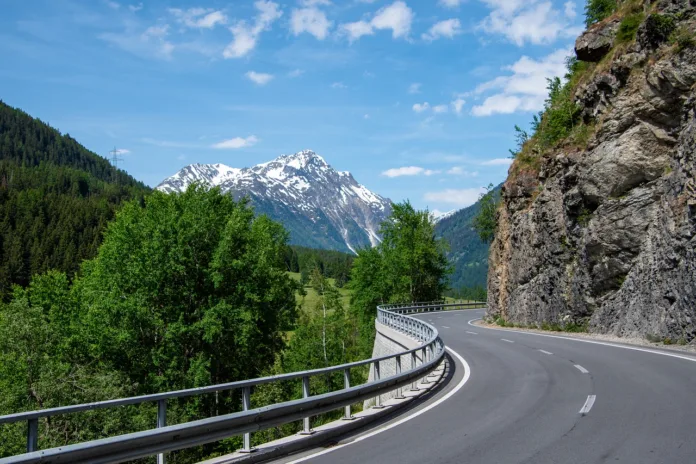Road barriers are a vital component of modern transportation systems. They serve a multifaceted role in improving traffic flow and enhancing safety for all road users, including pedestrians, cyclists, and construction workers. This article explores the impact of road barriers on traffic flow and safety, drawing from various authoritative sources.
Types and Functions of Road Barriers
Road barriers are diverse in form, each type serving specific purposes in traffic management and safety. Key types include:
Traffic Barrier: Often used to control the flow of traffic, these barriers are common on highways and busy roads.
Safety Barrier: Designed to protect pedestrians and cyclists from vehicles.
Cable Barrier: Consists of steel cables strung along posts, primarily used to prevent vehicles from crossing into oncoming traffic lanes.
Guardrail: A common sight on highways, guardrails prevent vehicles from veering off the road.
Crash Barrier: Specifically engineered to absorb the impact of a vehicle collision, minimizing injuries and damage.
Median Barrier: These are placed between opposing lanes of traffic to prevent head-on collisions.
Jersey Barrier: Heavy concrete barriers used to redirect traffic and protect pedestrians during road construction or accidents.
Fence Barrier, Road Bollard, and Road Fence: These barriers are used to define pedestrian areas or secure zones within roadways.
Road Block and Road Segregator: Deployed to control access to certain areas, often in response to temporary needs.
Functions of Road Barriers
The primary functions of road barriers include:
Enhancing Safety: Road barriers are crucial for protecting pedestrians, cyclists, and construction workers. By creating physical separations, they reduce the likelihood of accidents and injuries.
Traffic Management: Barriers are instrumental in guiding traffic flow, especially in areas of high congestion or where lane division is necessary.
Emergency Use: In situations like accidents or natural disasters, road barriers are quickly deployable to control traffic and ensure the safety of emergency response activities.
Aesthetic Purposes: Increasingly, road barriers are designed to be visually appealing, contributing to the urban landscape while maintaining their functional roles.
Construction Sites: They delineate safe zones, preventing unauthorized access to potentially dangerous construction areas.
Event Management: During public events, barriers manage crowds, ensuring orderly movement and preventing overcrowding.
Pedestrian Safety and Road Barriers
In rapidly urbanizing landscapes, pedestrian safety is a critical concern. Road barriers, particularly pedestrian traffic barricades, emerge as essential tools in safeguarding pedestrians in various urban scenarios. Amidst the bustling vehicular traffic and hectic construction sites, these barriers serve as both physical and visual cues, guiding pedestrians and ensuring their safety.
Functions in Different Settings
Construction Zones: Road barriers delineate safe zones around construction sites, preventing unintended pedestrian entry and guiding them along safe paths. This separation is crucial in avoiding accidents and ensuring that construction activities proceed without interruption.
Event Management: During public events, festivals, and gatherings, road barriers effectively manage the influx of pedestrians. They act as crowd control mechanisms, creating designated pathways and preventing overcrowding. This organization is vital for minimizing the risk of accidents and ensuring that attendees can enjoy the events safely.
Traffic Management in Urban Centers: Road barriers are instrumental in directing pedestrian movement in busy urban intersections. By clearly marking pedestrian zones and crosswalks, they significantly reduce the likelihood of pedestrian-vehicle collisions, contributing to a more orderly and safe urban environment.
Impact on Pedestrian Behavior
The presence of road barriers subtly influences pedestrian behavior, encouraging adherence to designated paths and crossings. This leads to a more disciplined flow of pedestrian traffic, further enhancing safety.
Design Considerations
Modern cities are increasingly focusing on the aesthetic integration of road barriers. Creative designs not only fulfill functional requirements but also contribute to the urban landscape’s visual appeal. This dual approach of combining safety with aesthetics underlines the role of road barriers as integral elements of urban planning.
Insulated Concrete Forms (ICFs) in Barrier Construction
The construction technology of road barriers has evolved over time. One notable advancement is the use of Insulated Concrete Forms (ICFs). ICFs consist of concrete walls sandwiched between layers of insulation material, known for their strength and energy efficiency. These forms have been increasingly used in constructing road barriers due to their durability and the added advantage of thermal and acoustic insulation.
Impact on Traffic Flow
Road barriers play a critical role in managing traffic flow. They are instrumental in directing foot traffic at busy intersections and creating safe crosswalks. By segregating pedestrian and vehicular pathways, road barriers reduce the risk of accidents and contribute to the overall orderliness of traffic. This segregation is especially crucial in urban areas where traffic congestion is a common challenge.
Emergency Situations
In emergencies, such as natural disasters or accidents, road barriers become essential for creating evacuation routes and keeping pedestrians away from danger zones. Their clear demarcation helps guide people to safety, highlighting their importance in emergency preparedness and response.
Aesthetic Integration
Beyond functionality, road barriers also contribute to urban aesthetics. Many cities have adopted creative designs for barricades, transforming them into elements of urban art. This not only serves a safety purpose but also enhances the visual appeal of cityscapes.
Challenges and Considerations
While road barriers offer numerous benefits, there are challenges to consider. One major challenge is the cost and technical knowledge required for installing advanced barrier systems like ICFs. Additionally, in cold climates, certain barrier materials may not perform optimally, necessitating careful selection based on local environmental conditions.
Conclusion
Road barriers are unsung heroes in urban safety, efficiently contributing to the well-being of city dwellers by creating secure spaces for both pedestrians and vehicles. Their impact on traffic flow and safety is undeniable, making them an indispensable part of modern urban planning. As cities continue to evolve, the adoption of innovative barrier solutions must remain a priority, with a focus on functionality, safety, and aesthetics.
Want to learn more about road barriers? Visit https://www.armcodirect.co.uk/product-category/road-barriers/
You may also like:
The Essential Role of Pedestrian Traffic Barricades

